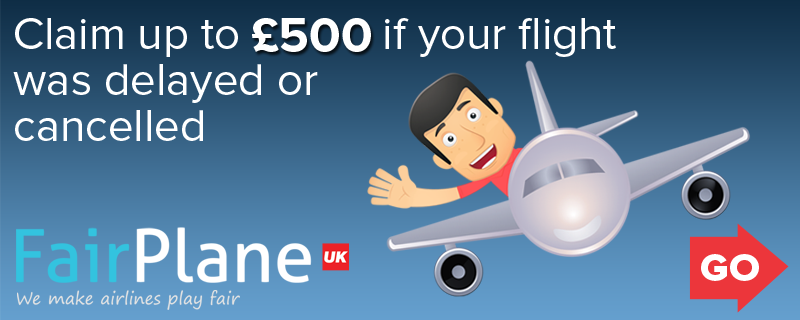 Commercial airlines are not deliberately cruel or even particularly careless when it comes to shipping dogs; they just aren’t set up to deal with pets efficiently. Unless a dog is small enough to carry on board the plane, air travel is risky.
Commercial airlines are not deliberately cruel or even particularly careless when it comes to shipping dogs; they just aren’t set up to deal with pets efficiently. Unless a dog is small enough to carry on board the plane, air travel is risky.
The basic problem is that to an airline, your pet is just an especially bothersome piece of baggage. And as everyone knows, baggage slip-ups are inevitable. When a mistake means your luggage goes to Minneapolis while you go to Atlanta, you’ll survive the inconvenience. But if your dog goes to the wrong city or is forgotten on a luggage carousel, it may not.
 Before taking your dog on a plane, there are several things that need to be organised before you even get to the airport. Luckily, most of the things necessary for airline dog travel can be addressed a long time in advance; it’s best to get preparations underway seven to eight months before you go. In all cases, even if your dog is healthy, contact the vet before you go – some countries require vaccinations, health checks or certificates before your dog can come in!
Before taking your dog on a plane, there are several things that need to be organised before you even get to the airport. Luckily, most of the things necessary for airline dog travel can be addressed a long time in advance; it’s best to get preparations underway seven to eight months before you go. In all cases, even if your dog is healthy, contact the vet before you go – some countries require vaccinations, health checks or certificates before your dog can come in!
How to prepare?
Many pet owners want to know how to fly with dogs without all the hassle, but the truth is, every journey will need a bit of preparation! However, if you organise things for your dog in advance, there shouldn’t be anything to worry about.
Make an appointment with your pet’s veterinarian for a checkup, and make sure all vaccinations are up-to-date. Obtain a health certificate from your veterinarian dated within 10 days of departure. For travel outside of the continental United States, additional planning and health care requirements may be necessary. Contact the foreign office of the country you are traveling to for more information.
Make sure your pet has a microchip for identification and is wearing a collar and ID tag. Breakaway collars are best for cats. The collar should also include destination information in case your pet escapes.
Book a direct flight whenever possible. This will decrease the chances that your pet is left on the tarmac during extreme weather conditions or mishandled by baggage personnel.
Purchase a USDA-approved shipping crate that is large enough for your pet to stand, sit and turn around in comfortably. Shipping crates can be purchased from many pet supply stores and airlines.
 Write the words “Live Animal” in letters at least one inch tall on top of and at least one side of the crate. Use arrows to prominently indicate the upright position of the crate. On the top of the crate, write the name, address and telephone number of your pet’s destination point, and whether you will be accompanying him or if someone else is picking him up. Make sure that the door is securely closed, but not locked, so that airline personnel can open it in case of an emergency. Line the crate bottom with some type of bedding-shredded paper or towels- to absorb accidents.
Write the words “Live Animal” in letters at least one inch tall on top of and at least one side of the crate. Use arrows to prominently indicate the upright position of the crate. On the top of the crate, write the name, address and telephone number of your pet’s destination point, and whether you will be accompanying him or if someone else is picking him up. Make sure that the door is securely closed, but not locked, so that airline personnel can open it in case of an emergency. Line the crate bottom with some type of bedding-shredded paper or towels- to absorb accidents.
Affix a current photograph of your pet to the top of the crate for identification purposes. Should your pet escape from the carrier, this could be a lifesaver. You should also carry a photograph of your pet.
The night before you leave, make sure you’ve frozen a small dish or tray of water for your pet. This way, it can’t spill during loading, and will melt by the time he’s thirsty. Tape a small pouch, preferably cloth, of dried food outside the crate. Airline personnel will be able to feed your pet in case he gets hungry on long-distance flights or a layover.
Tranquilizing your pet is generally not recommended, as it could hamper his breathing. Check with your veterinarian first.
Tell every airline employee you encounter, on the ground and in the air, that you are traveling with a pet in the cargo hold. This way, they’ll be ready if any additional considerations or attention is needed.
If the plane is delayed, or if you have any concerns about the welfare of your pet, insist that airline personnel check the animal whenever feasible. In certain situations, removing the animal from the cargo hold and deplaning may be warranted.
– – – – – – – – – – – – – – –
ANNOUNCEMENT: ONLY FOR UK CUSTOMERS!! If you’ve flown within the last 6 years and your flight was disrupted (delayed, cancelled, denied boarding), then you may be entitled to receive up £600 per passenger in compensation.
Click here for more information.
– – – – – – – – – – – – – – –




